- Key Considerations for Selecting Honey Alyssum
- 1. Growing Conditions
- 2. Varieties
- 3. Maintenance
- 4. Companion Planting
- Factors to Keep in Mind when Choosing Honey Alyssum
- Choosing Honey Alyssum: A Comprehensive Guide
- Factors to Consider
- Popular Honey Alyssum Varieties
- Planting and Care Tips
- Proven Tips for Selecting Honey Alyssum
- 1. Consider your climate
- 2. Choose a compact variety
- 3. Consider flower color
- 4. Look for disease resistance
- 5. Read reviews and recommendations
- 6. Consider companion planting
- The Best Practices for Choosing Honey Alyssum
- 1. Consider the Growing Conditions
- 2. Choose the Right Variety
- Expert Advice for Choosing Honey Alyssum
- 1. Flower Color
- 2. Height and Spread
- 3. Scent
- 4. Growing Conditions
- 5. Disease Resistance
- 6. Maintenance and Care
- 7. Look for Recommendations
- Important Factors to Look for in Honey Alyssum Selection
- 1. Flower Color
- 2. Bloom Time
- 3. Height and Spread
- 4. Fragrance
- 5. Disease Resistance
- 6. Growing Conditions
- Honey Alyssum Selection: Dos and Don’ts
- Do: Consider Growing Conditions
- Do: Choose a Compact Variety
- Do: Look for Fragrant Varieties
- Don’t: Overlook Disease Resistance
- Don’t: Neglect Companion Planting
- Don’t: Forget About Bloom Time
- Questions and Answers:
- What is the best way to choose honey alyssum?
- How can I tell if honey alyssum is a good choice for my garden?
- Are there any specific varieties of honey alyssum that I should look for?
- How should I care for honey alyssum to ensure maximum results?
- Can honey alyssum be grown in containers?
- Videos: Sweet Alyssum: The Companion Plant You’re Probably Not Growing
Honey Alyssum is a beautiful and fragrant flower that is often used in gardens and landscapes. It is easy to grow and attracts beneficial insects such as bees and butterflies. However, not all varieties of Honey Alyssum are created equal. To ensure maximum results in your garden, it is important to choose the right variety.
One of the first things to consider when choosing Honey Alyssum is the color. There are many different colors available, including white, pink, purple, and yellow. Each color has its own unique characteristics and can create a different look in your garden. For example, white Honey Alyssum is elegant and can create a sense of calm and serenity, while purple Honey Alyssum is vibrant and adds a pop of color to your landscape.
In addition to color, it is also important to consider the size of the Honey Alyssum plants you choose. Some varieties grow tall and upright, while others have a more trailing habit. The size of your garden and the overall design you are trying to achieve will help determine the best size for your Honey Alyssum plants. For example, if you have a small garden or want to use Honey Alyssum in hanging baskets, a trailing variety would be a better choice.
Key Considerations for Selecting Honey Alyssum
Honey Alyssum is a beautiful and fragrant flower that attracts pollinators such as bees and butterflies to your garden. When choosing Honey Alyssum for your garden, there are several key considerations to keep in mind:
1. Growing Conditions
Honey Alyssum thrives in full sun and well-drained soil. It is important to choose a location in your garden that receives at least six hours of direct sunlight each day. The soil should be well-drained to prevent waterlogging, as excessive moisture can lead to root rot.
In terms of soil pH, Honey Alyssum prefers slightly acidic to neutral conditions, with a pH range of 5.5 to 7.0. Conduct a soil test to determine the pH of your soil and make any necessary adjustments to create the ideal growing conditions.
2. Varieties
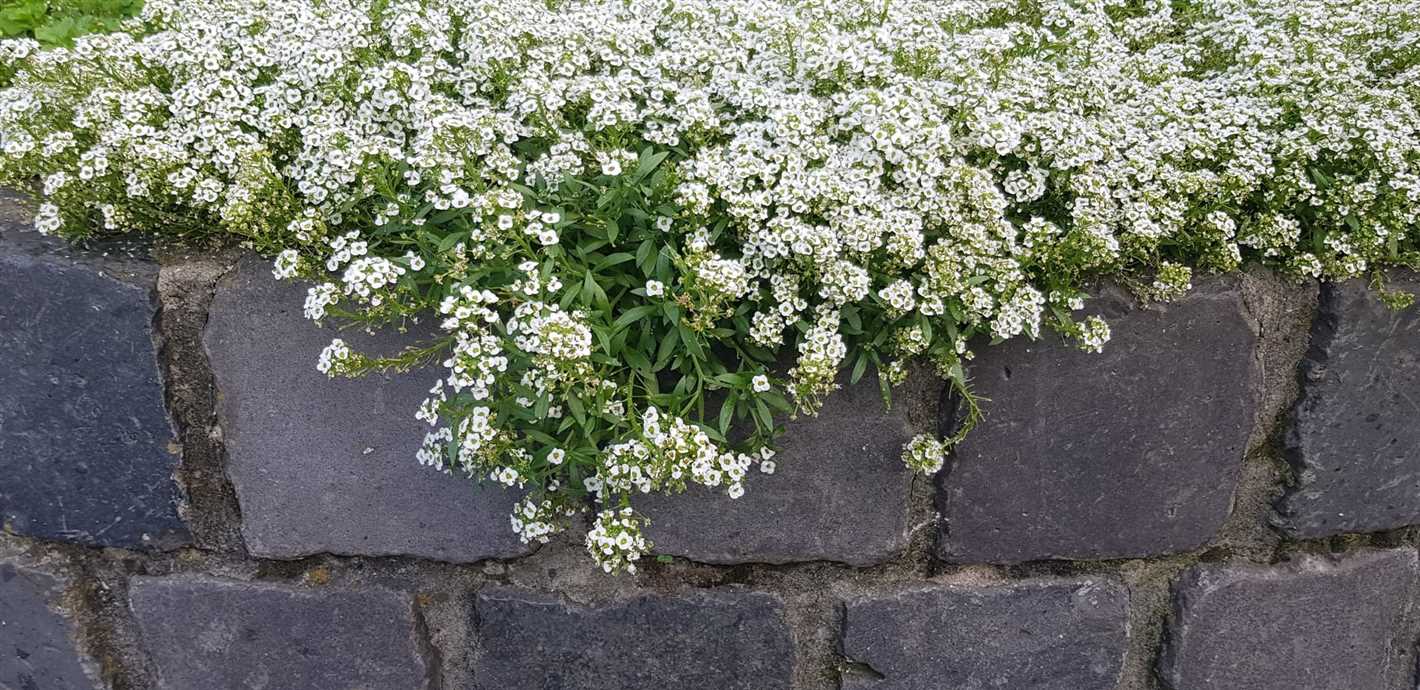
There are several varieties of Honey Alyssum available, each with its own unique characteristics. The most common varieties include:
- Snow Crystal: This variety produces pure white flowers and grows to a height of 6 to 8 inches. It is known for its strong fragrance and compact growth habit.
- Carpet of Snow: As the name suggests, this variety forms a dense carpet of white flowers. It is a low-growing variety, reaching a height of only 4 to 6 inches.
- Wonderland Purple: This variety features beautiful purple flowers and grows to a height of 6 to 8 inches. It is highly attractive to bees and butterflies.
Consider the height, flower color, and fragrance of each variety to choose the one that best suits your garden aesthetic and desired pollinator attractants.
3. Maintenance
Honey Alyssum is a relatively low-maintenance plant, making it an ideal choice for beginner gardeners or those with limited time for gardening activities. It requires regular watering to keep the soil moist but not waterlogged. Remove any weeds that may compete for nutrients and space.
Deadhead the spent flowers regularly to promote continuous blooming throughout the growing season. This not only keeps the plant looking tidy but also encourages the production of new flowers.
4. Companion Planting
Honey Alyssum is a great companion plant for many other flowers and vegetables. It attracts beneficial insects such as bees and butterflies, which can help pollinate nearby plants and increase overall garden productivity.
Consider planting Honey Alyssum alongside other pollinator-friendly plants such as lavender, salvia, and zinnias. Additionally, it can be planted near vegetables such as tomatoes and peppers to attract pollinators and improve fruit set.
| Honey Alyssum Varieties | Companion Plants |
|---|---|
| Snow Crystal | Lavender, Salvia |
| Carpet of Snow | Zinnias, Marigolds |
| Wonderland Purple | Lupines, Coreopsis |
By considering these key factors, you can select the right Honey Alyssum variety for your garden and create an attractive and pollinator-friendly space that will bring joy for years to come.
Factors to Keep in Mind when Choosing Honey Alyssum
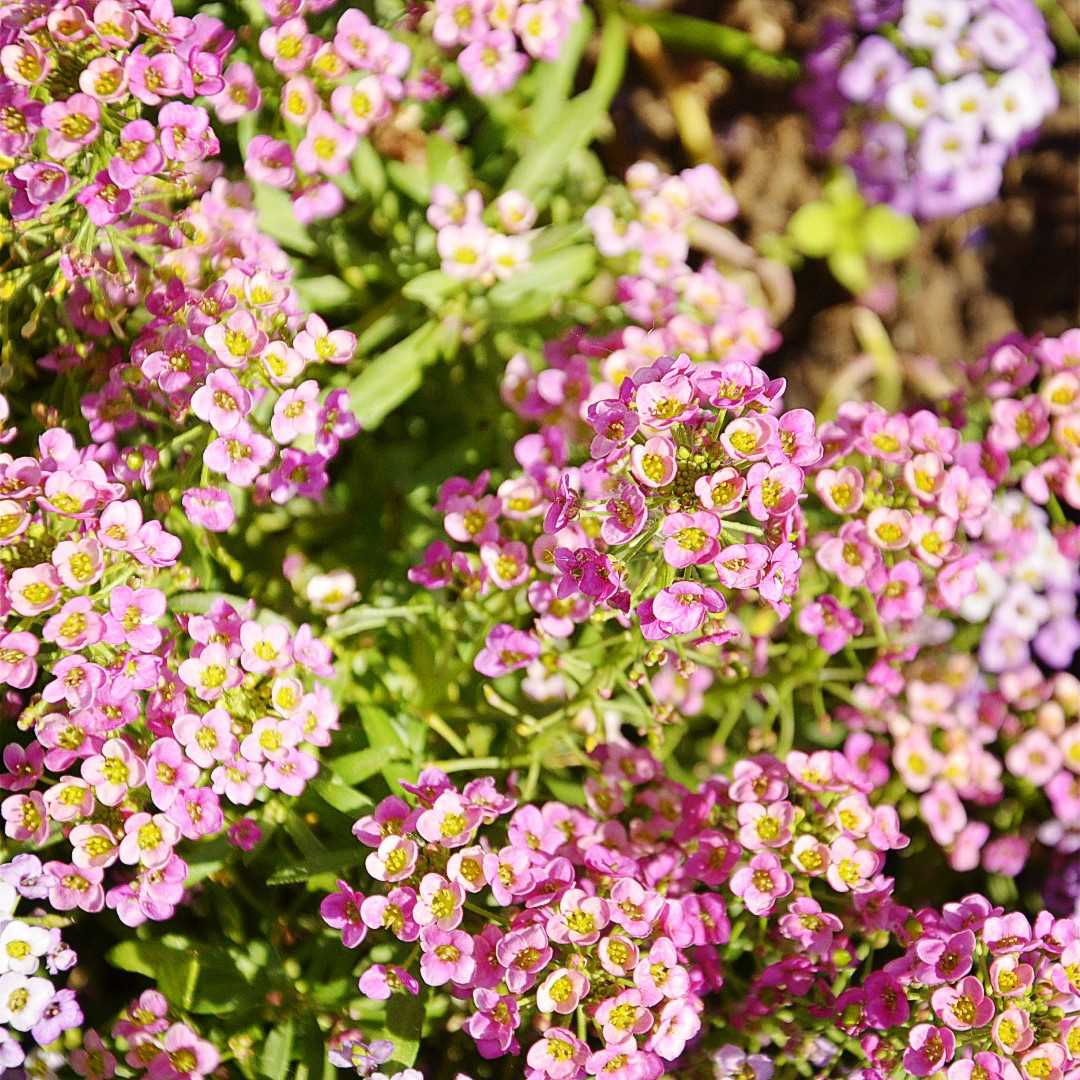
When choosing honey alyssum for maximum results, there are several factors to consider:
- Fragrance: Honey alyssum is known for its delightful sweet fragrance. When choosing honey alyssum, opt for varieties that have a strong fragrance. This will not only add to the charm of your garden but will also attract bees, butterflies, and other beneficial insects.
- Size and Growth Habit: Consider the size and growth habit of the honey alyssum variety you choose. Some varieties stay compact and low-growing, making them ideal for edging or containers, while others may form larger mounds or spread more vigorously.
- Flower Color: Honey alyssum comes in various flower colors, including white, pink, purple, and yellow. Choose the color that best complements your garden’s color scheme or desired aesthetic.
- Blooming Period: Determine the blooming period of the honey alyssum variety you are considering. Some varieties may have a longer blooming period, while others may be more focused on spring or fall flowering.
- Hardiness: Check the hardiness of the honey alyssum variety for your specific climate. Make sure it can withstand the temperature extremes in your region and thrive in your garden.
- Soil and Sun Requirements: Consider the soil and sun requirements of the honey alyssum variety. Some varieties prefer well-draining soil, while others may tolerate a range of soil types. Additionally, some varieties may require full sun, while others can tolerate partial shade.
- Attractiveness to Pollinators: Honey alyssum is known for attracting pollinators like bees and butterflies. Choose a variety that is highly attractive to these beneficial insects to support pollination in your garden.
By considering these factors when choosing honey alyssum, you can ensure that you select the best variety for your garden and achieve maximum results in terms of fragrance, beauty, and pollinator attraction.
Choosing Honey Alyssum: A Comprehensive Guide
Choosing the right honey alyssum variety is crucial for maximizing your results. Whether you are a beginner or an experienced gardener, this comprehensive guide will help you make the best choices for your garden.
Factors to Consider
Before selecting a honey alyssum variety, consider the following factors:
- Growing Conditions: Evaluate your growing conditions, including sunlight, temperature, and soil type. Honey alyssum thrives in full sun or partial shade and well-drained soil, making it suitable for most gardens.
- Plant Height: Determine the desired height for your honey alyssum. Some varieties grow low and compact, while others can reach up to 10 inches in height. Choose a variety that fits well with your garden design and preferences.
- Flower Color: Honey alyssum comes in a range of colors, including white, pink, purple, and yellow. Consider the color scheme of your garden and choose a variety that complements or contrasts with other flowers.
- Bloom Time: Different varieties of honey alyssum have varying bloom times. Some bloom in early spring, while others flower throughout the summer and fall. Choose a variety with a bloom time that aligns with your desired garden aesthetic.
- Fragrance: Honey alyssum is known for its sweet fragrance, which attracts pollinators such as bees and butterflies. If you want to enjoy the scent in your garden, select a fragrant variety.
Popular Honey Alyssum Varieties
Here are some popular honey alyssum varieties to consider:
| Variety | Plant Height | Flower Color | Bloom Time | Fragrance |
|---|---|---|---|---|
| Snow Princess | 4-6 inches | White | Early spring to summer | Fragrant |
| Royal Carpet | 6-8 inches | Purple | Spring to fall | Fragrant |
| Carpet of Snow | 4-6 inches | White | Spring to fall | Fragrant |
| Mountain Gold | 6-8 inches | Yellow | Spring to summer | Slightly fragrant |
Planting and Care Tips
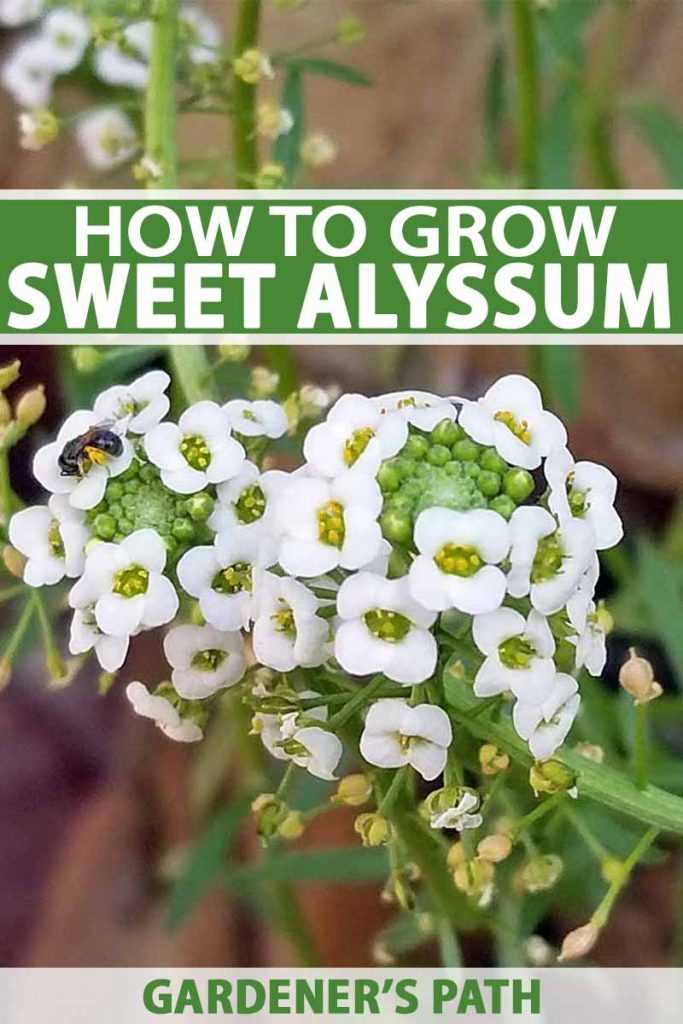
- Plant honey alyssum in well-drained soil with a pH of 6.0-7.5.
- Sow seeds directly in the garden or start indoors 4-6 weeks before the last frost.
- Water regularly, keeping the soil moist but not waterlogged.
- Remove faded flowers to encourage continuous blooming.
- Fertilize every 4-6 weeks with a balanced liquid or granular fertilizer.
- Provide support or trellis for taller varieties to prevent flopping.
- Monitor for pests and diseases, such as aphids or powdery mildew, and take appropriate action.
- Enjoy the beauty and fragrance of honey alyssum in your garden!
Proven Tips for Selecting Honey Alyssum
Honey Alyssum is a popular choice for gardeners looking to attract pollinators such as bees and butterflies. If you’re interested in adding this beautiful and fragrant plant to your garden, here are some proven tips for selecting the perfect variety:
1. Consider your climate
Before choosing a variety of honey alyssum, it’s important to consider your climate. Honey alyssum prefers full sun and well-drained soil, so make sure your garden meets these requirements. Additionally, some varieties of honey alyssum are more cold-hardy than others, so if you live in an area with harsh winters, choose a variety that can withstand the cold.
2. Choose a compact variety
When selecting honey alyssum, look for a compact variety. Compact varieties tend to produce more flowers and have a neater, more uniform appearance. They are also less likely to become leggy or straggly, making them easier to maintain. Look for varieties with a mounding habit and dense foliage for maximum visual impact.
3. Consider flower color
Honey alyssum comes in a variety of flower colors, including white, pink, purple, and yellow. Consider the color scheme of your garden and choose a variety that complements it. White and pink varieties tend to be the most popular choices, as they provide a soft and romantic look.
4. Look for disease resistance
Some varieties of honey alyssum are more resistant to diseases such as powdery mildew and root rot than others. Look for varieties that are labeled as disease-resistant to ensure that your plants stay healthy and vibrant throughout the growing season.
5. Read reviews and recommendations
Before making your final decision, take the time to read reviews and recommendations from other gardeners. This can give you valuable insights into the performance and characteristics of different honey alyssum varieties. Look for varieties that have consistently positive reviews and high ratings for the best chance of success in your garden.
6. Consider companion planting
Honey alyssum is a great companion plant for many other flowers and vegetables. It attracts beneficial insects and can help deter pests. Consider planting honey alyssum alongside vegetables such as tomatoes, peppers, and lettuce, or alongside flowers such as marigolds and zinnias for a beautiful and functional garden.
- Remember these tips when selecting honey alyssum:
- Consider your climate
- Choose a compact variety
- Consider flower color
- Look for disease resistance
- Read reviews and recommendations
- Consider companion planting
The Best Practices for Choosing Honey Alyssum
1. Consider the Growing Conditions
When choosing honey alyssum, it is important to understand its growing requirements. This will help ensure that the plant thrives in your garden.
- Sunlight: Honey alyssum prefers full sun, although it can tolerate partial shade in hotter regions.
- Soil: The plant prefers well-draining soil with a pH level between 6.0 and 7.0.
- Water: Honey alyssum requires regular watering to keep the soil moist. However, overwatering should be avoided as it can lead to root rot.
- Temperature: The ideal temperature range for honey alyssum is between 60°F and 75°F. It can tolerate some frost, but prolonged exposure to freezing temperatures can be detrimental to the plant.
2. Choose the Right Variety
There are different varieties of honey alyssum available, each with its own unique characteristics. Consider the following factors when choosing a variety:
- Size: Honey alyssum comes in various sizes, including compact, medium, and trailing. Choose a size that suits your garden space and aesthetic preferences.
- Color: The flowers of honey alyssum come in shades of white, yellow, pink, and purple. Select a color that complements your garden design.
- Fragrance: Some varieties of honey alyssum have a stronger fragrance than others. If you want a highly fragrant plant, look for varieties labeled as “fragrant” or “sweet.”
- Duration: Consider whether you want a variety that blooms for a short period or continuously throughout the season. This will depend on your desired garden display and maintenance preferences.
By considering these best practices when choosing honey alyssum, you can ensure that you select the right variety for your garden and provide the optimal growing conditions for its success.
Expert Advice for Choosing Honey Alyssum
When it comes to choosing honey alyssum, it’s important to consider some key factors to ensure maximum results. Here are some expert tips to help you make the best choice:
1. Flower Color
Honey alyssum comes in a variety of colors, including white, purple, pink, and yellow. Consider the color scheme of your garden or the area where you plan to plant honey alyssum. Choose a color that complements or contrasts with the surrounding plants to create an appealing aesthetic.
2. Height and Spread
Take into account the height and spread of the honey alyssum cultivar you’re interested in. Some options stay compact and low-growing, while others may reach a foot or more in height. Determine the size specifications that will work best for your garden or landscaping needs.
3. Scent
Honey alyssum is known for its sweet fragrance, which attracts pollinators like bees and butterflies. If you’re specifically looking to attract these beneficial insects to your garden, choose a variety of honey alyssum with a strong scent.
4. Growing Conditions
Consider the growing conditions in your area and choose a honey alyssum cultivar that is well-suited to those conditions. Some varieties may prefer full sun, while others can tolerate partial shade. Similarly, some cultivars may be more drought-tolerant, while others require more consistent moisture.
5. Disease Resistance
Check the disease resistance of the honey alyssum cultivar you’re considering. Some varieties are more resistant to common ailments like powdery mildew or root rot, which can help ensure the health and longevity of your plants.
6. Maintenance and Care
Consider the level of maintenance and care required for the honey alyssum cultivar you’re interested in. Some options may be more low-maintenance and require less frequent deadheading or pruning. If you’re a beginner gardener or prefer low-maintenance plants, choose a honey alyssum variety that fits your needs.
7. Look for Recommendations
Don’t hesitate to ask for recommendations from local gardeners, nurseries, or horticultural experts. They can provide valuable insights and suggestions based on their experience and knowledge of the local growing conditions.
By considering these factors, you can make an informed decision and choose the honey alyssum cultivars that will thrive in your garden and provide maximum results.
Important Factors to Look for in Honey Alyssum Selection
Choosing the right variety of honey alyssum is crucial to achieving maximum results. Here are some important factors to consider when selecting honey alyssum:
1. Flower Color
One of the main factors to consider when choosing honey alyssum is the flower color. Honey alyssum comes in various shades, including white, pink, purple, and lavender. Consider the color scheme of your garden or landscape design and choose honey alyssum that complements the overall aesthetic.
2. Bloom Time
Another important factor is the bloom time of the honey alyssum variety. Some varieties bloom earlier in the season, while others bloom later. Determine when you want your honey alyssum to bloom and choose a variety that aligns with your desired bloom time.
3. Height and Spread
Pay attention to the height and spread of the honey alyssum variety you are considering. Some varieties have a compact growth habit, while others can spread more widely. Consider the space available in your garden or container and choose a variety that fits the allotted area.
4. Fragrance
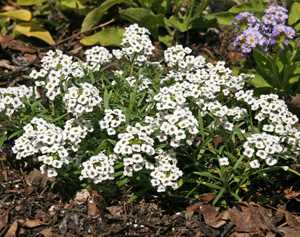
Honey alyssum is known for its sweet fragrance, which attracts pollinators such as bees and butterflies. Consider the fragrance intensity of the variety you are selecting. Some varieties have a stronger scent than others, so choose one that suits your preference.
5. Disease Resistance
When selecting honey alyssum, consider the disease resistance of the variety. Look for varieties that are known to be resistant to common diseases and pests, as this can help ensure the health and longevity of your plants.
6. Growing Conditions
Lastly, consider the growing conditions required by the honey alyssum variety you are considering. Some varieties prefer full sun, while others can tolerate partial shade. Take into account the specific conditions of your garden or landscape and choose a variety that will thrive in those conditions.
By considering these important factors, you can select the right honey alyssum variety that will thrive in your garden and attract pollinators for maximum results.
Honey Alyssum Selection: Dos and Don’ts
Choosing the right honey alyssum variety is crucial for achieving maximum results in your garden. Here are some dos and don’ts to keep in mind when selecting honey alyssum:
Do: Consider Growing Conditions
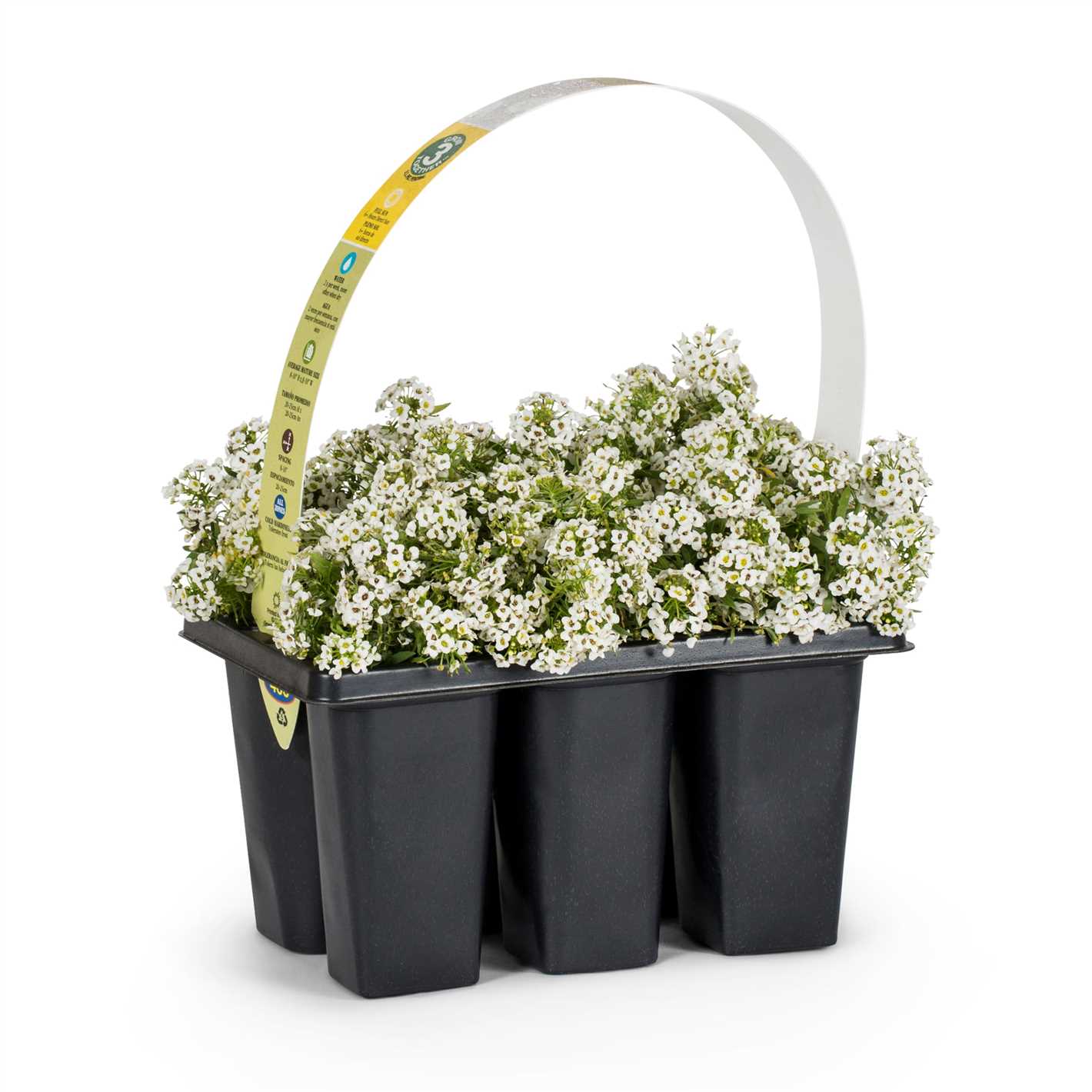
Before selecting a honey alyssum variety, consider the growing conditions in your garden. Honey alyssum prefers full sun to partial shade and well-draining soil. Make sure the location where you plan to grow honey alyssum meets these requirements.
Do: Choose a Compact Variety
When selecting honey alyssum, look for compact varieties. Compact varieties are more likely to produce dense clusters of flowers, creating a stunning visual impact in your garden. They are also easier to maintain and less prone to flopping or sprawling.
Do: Look for Fragrant Varieties
Honey alyssum is loved not only for its delicate flowers but also for its sweet fragrance. When choosing a honey alyssum variety, consider selecting ones with a strong, pleasant scent. This will enhance the olfactory experience in your garden and attract pollinators.
Don’t: Overlook Disease Resistance
Some honey alyssum varieties are more resistant to diseases and pests than others. When making your selection, check if the variety you are considering has good disease resistance. This will help ensure the long-term health and productivity of your honey alyssum plants.
Don’t: Neglect Companion Planting
Honey alyssum can benefit from companion planting. Consider planting it alongside other flowering plants, such as marigolds or zinnias, to attract a wider range of beneficial insects. This can help with pollination and natural pest control in your garden.
Don’t: Forget About Bloom Time
When selecting honey alyssum, pay attention to the bloom time. Different varieties may have different blooming periods. Choosing a combination of early, mid, and late-blooming varieties can ensure a continuous display of flowers throughout the growing season.
| Variety | Height | Scent | Bloom Time |
|---|---|---|---|
| Carpet of Snow | 4-6 inches | Fragrant | Early to Mid-Summer |
| Goldkugel | 6-8 inches | Fragrant | Early Spring to Early Summer |
| Royal Carpet | 4-6 inches | Fragrant | Summer to Fall |
| Snow Crystals | 6-8 inches | Fragrant | Summer to Fall |
Questions and Answers:
What is the best way to choose honey alyssum?
The best way to choose honey alyssum is to look for plants that have healthy, green leaves and are not wilting. It is also important to choose plants that are in bud or just starting to flower, as this indicates that they are healthy and will continue to produce flowers throughout the season.
How can I tell if honey alyssum is a good choice for my garden?
Honey alyssum is a good choice for your garden if you are looking for a plant that attracts bees, butterflies, and other beneficial insects. It is also a good choice if you want a plant that will provide ground cover and suppress weeds. Additionally, honey alyssum has a pleasant fragrance and will add beauty and color to your garden.
Are there any specific varieties of honey alyssum that I should look for?
There are several varieties of honey alyssum available, but some popular choices include ‘Carpet of Snow’, ‘Basket of Gold’, and ‘Tiny Tim’. These varieties are known for their compact size and abundance of flowers. They are also easy to grow and can thrive in a variety of soil conditions.
How should I care for honey alyssum to ensure maximum results?
To care for honey alyssum, it is important to water the plants regularly, but be careful not to overwater them as this can lead to root rot. It is also important to deadhead spent flowers to encourage new growth and prolong the blooming period. Additionally, honey alyssum benefits from a light application of fertilizer every few weeks.
Can honey alyssum be grown in containers?
Yes, honey alyssum can be grown in containers. It is a great choice for filling in the edges of containers or spilling over the sides. When growing honey alyssum in containers, be sure to choose a well-draining potting mix and water the plants regularly to prevent them from drying out.







